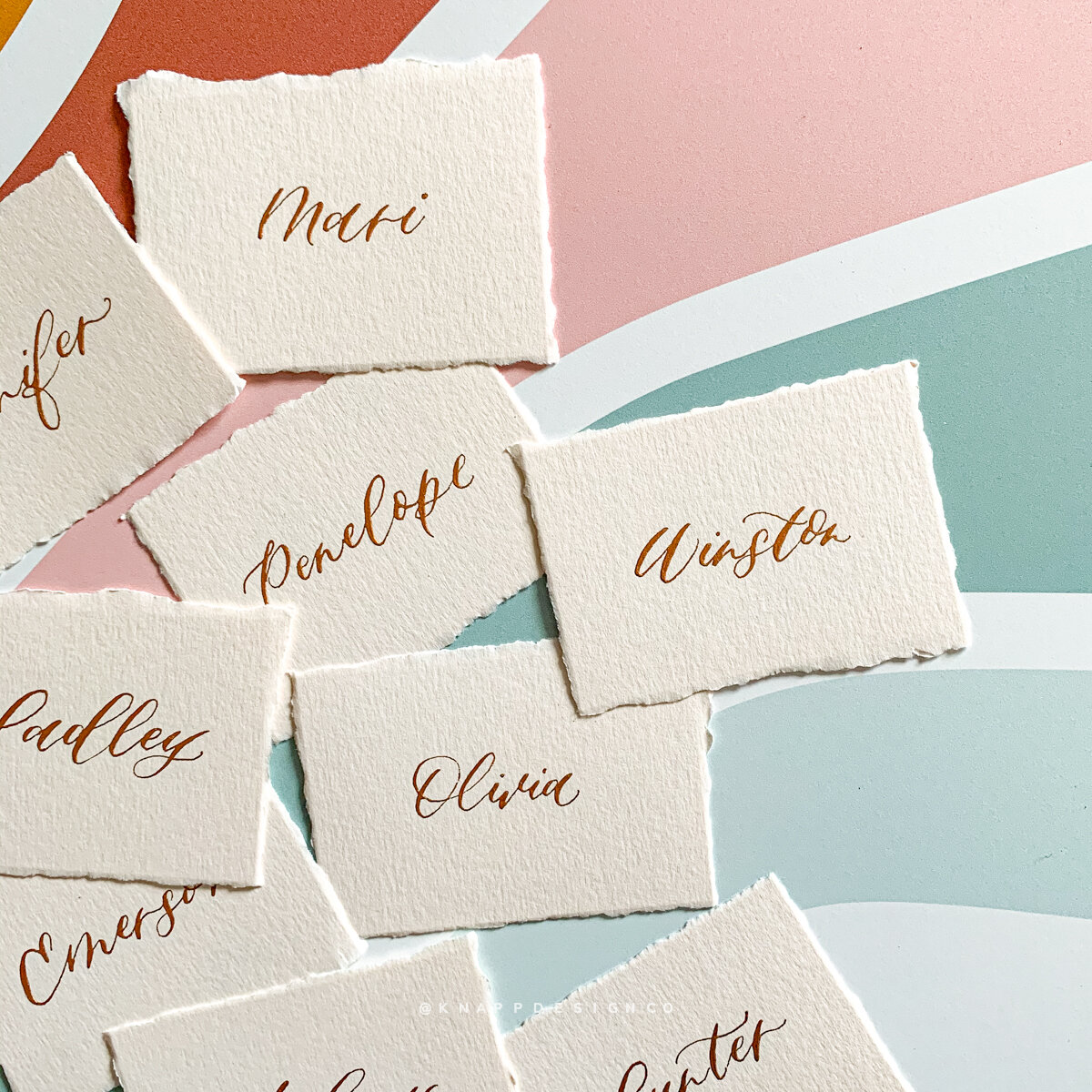This is part twenty-one of a series called One a Day in May, where we will review one wedding stationery term every day in May!
Centuries ago, paper was made by beating scraps of linen or wood fibers to a thick pulp that was mixed with water and spreading it out on a sieve-like framed screen that was called a mould. The frame around the mould was called a deckle and when all the water from the pulp had dripped through and the sheet was dry the frame was removed, leaving a rough, fibrous edge to the piece of paper. Deckled-edge paper was all paper because that was the process at the time.
Later, people learned how to manufacture paper sheets using much more efficient methods and industrial presses so the paper that is produced now is typically pressed through heavy rollers and cut to provide uniform, smooth surfaces and edges. Handmade paper still exists as a specialty craft and many artists and stationers have their “sources” for getting a hold of good handmade paper for various projects.
There are also ways to achieve the handmade “look” while still using more affordable, manufactured paper. A popular method is hand-tearing the sheets. Using a straightedge (or even a special “deckle” style ruler; they’re sold in craft stores) you can tear the pieces to look more organic. To even further create the handmade aesthetic you can score or fold the sheet where you want to tear a new edge and wet the paper along the fold to loosen the fibers in the sheet. After a few rounds of folding and wetting the paper can pull apart with a fibrous-looking edge.
If you love the look of handmade paper make a point of discussing your options with your wedding stationer. We can advise you on whether handmade or hand-torn (machine made) paper will work best to achieve your aesthetic!


